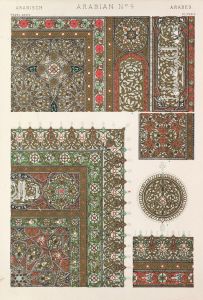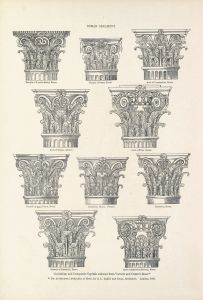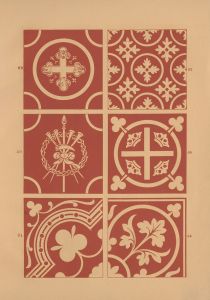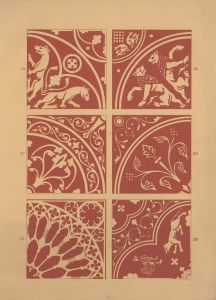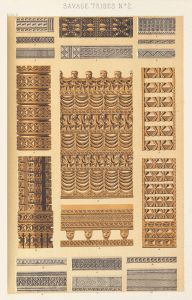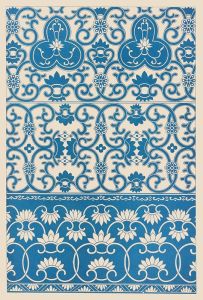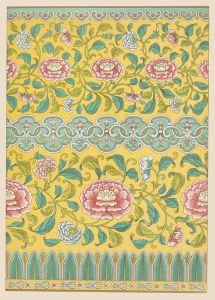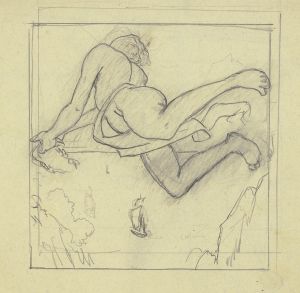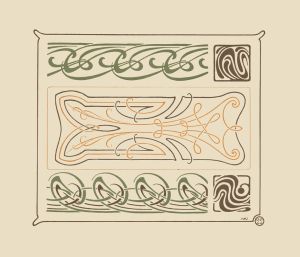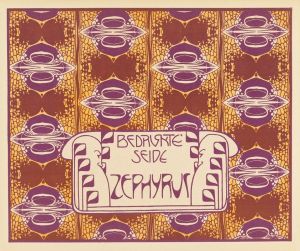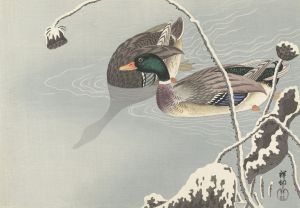
Examples of Chinese ornament, Pl.16
A hand-painted replica of Owen Jones’s masterpiece Examples of Chinese ornament, Pl.16, meticulously crafted by professional artists to capture the true essence of the original. Each piece is created with museum-quality canvas and rare mineral pigments, carefully painted by experienced artists with delicate brushstrokes and rich, layered colors to perfectly recreate the texture of the original artwork. Unlike machine-printed reproductions, this hand-painted version brings the painting to life, infused with the artist’s emotions and skill in every stroke. Whether for personal collection or home decoration, it instantly elevates the artistic atmosphere of any space.
"Examples of Chinese Ornament, Pl.16" is a notable illustration from the influential design book "The Grammar of Ornament" by Owen Jones, first published in 1856. Owen Jones was a prominent British architect and designer, renowned for his contributions to the theory of design and his role in the development of modern color theory. His book, "The Grammar of Ornament," is a comprehensive collection of design patterns and motifs from various cultures around the world, and it played a significant role in the decorative arts during the 19th century.
Plate 16, specifically, is part of the section dedicated to Chinese ornamentation. This section showcases the intricate and symbolic designs characteristic of Chinese art, reflecting the rich cultural heritage and aesthetic principles of China. The illustrations in this section are based on authentic Chinese artworks and artifacts, which Jones studied and adapted for his book. His work aimed to educate Western designers and artists about the diversity and beauty of global design traditions, encouraging them to draw inspiration from these sources.
The Chinese ornaments depicted in Plate 16 are characterized by their use of vibrant colors, intricate patterns, and symbolic motifs. Common elements in Chinese design include floral patterns, geometric shapes, and representations of mythical creatures such as dragons and phoenixes. These motifs often carry significant cultural meanings, symbolizing concepts such as prosperity, longevity, and harmony. The use of symmetry and balance is also a prominent feature in Chinese ornamentation, reflecting the philosophical and aesthetic values of Chinese culture.
Jones's depiction of Chinese ornaments was part of a broader Victorian fascination with the art and culture of the East, often referred to as "Orientalism." This interest was fueled by increased trade and contact between Europe and Asia during the 19th century. While Jones's work was instrumental in introducing Chinese design principles to a Western audience, it is important to note that his interpretations were filtered through a Western lens, and may not fully capture the original context and significance of the designs.
"The Grammar of Ornament" was widely influential in the fields of architecture, interior design, and the decorative arts. It provided a valuable resource for designers seeking inspiration from non-Western cultures and contributed to the eclecticism that characterized much of 19th-century design. Jones's emphasis on the importance of understanding and respecting the original cultural context of design elements was a progressive approach for his time, advocating for a more informed and appreciative engagement with global artistic traditions.
In summary, "Examples of Chinese Ornament, Pl.16" by Owen Jones is a significant representation of Chinese design within a seminal work that sought to document and celebrate the diversity of global ornamentation. Through his detailed illustrations and thoughtful commentary, Jones played a crucial role in broadening the horizons of Western design and fostering a greater appreciation for the artistic achievements of other cultures.





